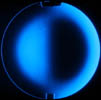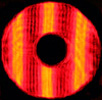January 18, 2015: Comet Lovejoy
All text and images Copyright Michael E. Lockwood, all rights reserved.
I admit that I am not much of an astrophotographer in the normal sense - I don't usually just shoot celestial targets, I usually mix them with terrestrial scenes. (If you're an experienced astrophotographer, you may not be very interested in this, but you might find it entertaining, at least....)
However, the skies looked fairly good one night, and I decided to shoot some images of the comet with three different lenses, and then stack them when I had time.
I used a 24mm lens at f/2.5, ISO 1600, a 50mm lens at f/2.2, ISO 1000, and a 135mm lens at f/2.2, ISO 1000. Exposures were 30 seconds, and the camera did its own internal dark frame subtraction. All tracked the sky using an iOptron Sky Tracker on a tripod.
I shot some bias/offset frames and attempted stacking and processing. The vignetting of the lenses was quite conspicuous, so I shot a series of flat frames, which helped, but was not perfectly executed. After stacking and processing, a final noise reduction step was done with a Photoshop plugin.
The first image below shows the gradients that were present in the sky, likely due to some passing high clouds and light pollution. These features were visible as moving lighter areas in the later shots with the longer lenses. While the bottom right is useless, the other parts of the image show some promise, with Barnard's loop visible arount Orion at left, as well as the Rosette Nebula complex at the left edge of the image near the bottom, and the California Nebula at the top edge of the frame, just right of center. The comet is seen directly to the right of the Pleaides. This type of image shows just how tricky it is to get good wide field, deep images of the sky due to various factors.
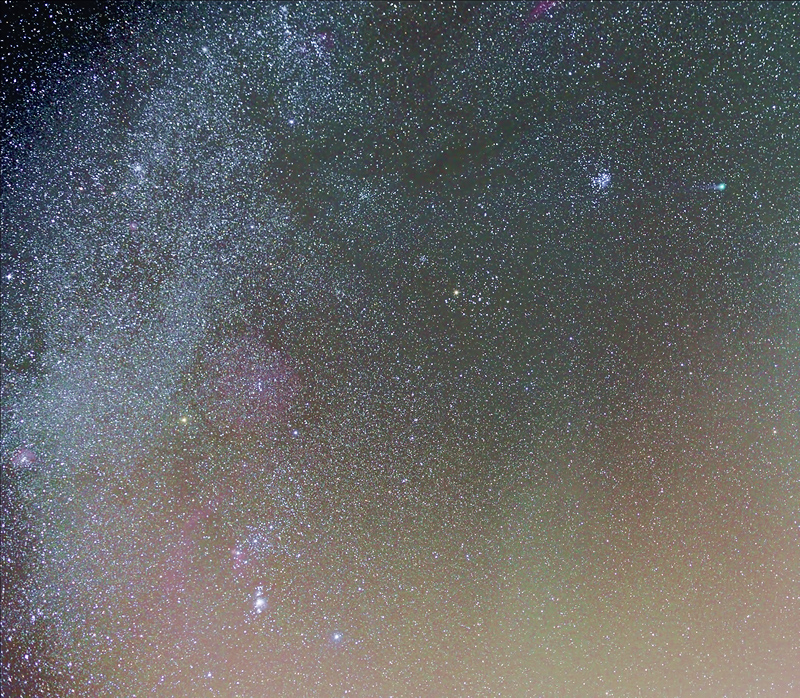
Next up was the 50mm lens, which I realized later I had left the protective filter on. Oh well, I'll remember to remove it next time and the stars will be a bit smaller. The result was not bad - dark nebulae in the winter Milky Way stood out, the Pleaides cluster (M45) glowed brightly near the center of the frame, and the long, wispy tail of Comet Lovejoy stretched out faintly past it. Aldebaran and the Hyades are visible at lower left.
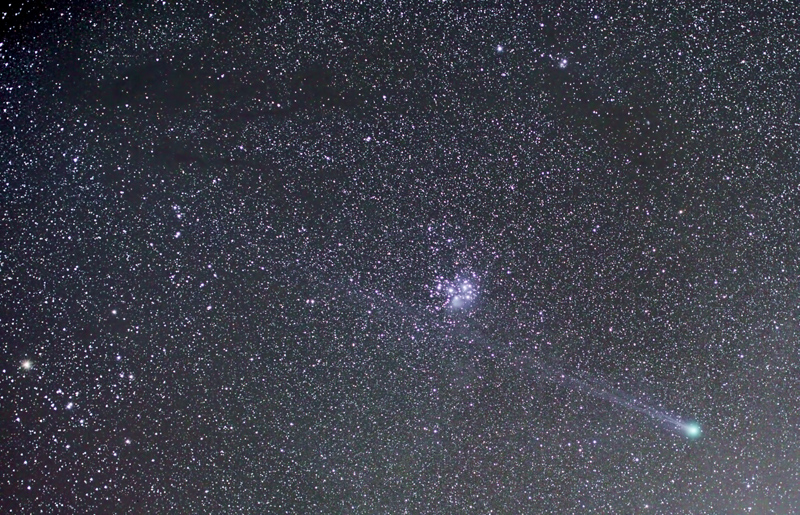
Finally, I switched to the 135mm lens, which I thought should give the best images. Turns out I was right. I stacked over thirty images and did quite a bit of post-processing to achieve the image below. Some thin clouds or upper atmospheric junk were moving through or in, and produced some of the green glowing effect that is seen. The tail can be traced out to the Pleaides, and the nebulosity around those stars glows brightly. I can't help wondering, though, what I would have captured if I had done these shots first, rather than last.
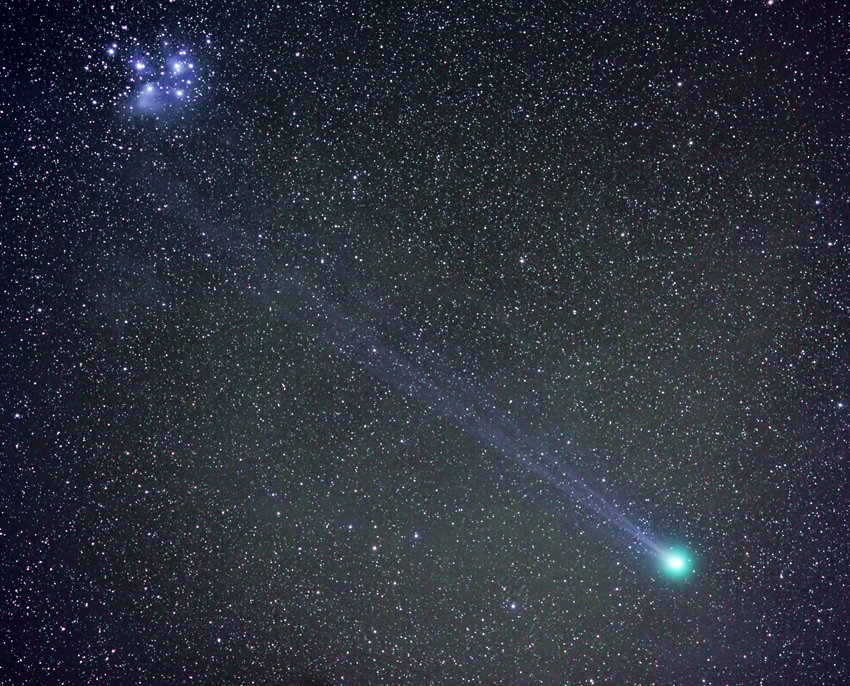
I did enjoy learning the process of producing these images. If the skies cooperate in the coming days and weeks, I may have another go at it and hopefully it will be a very clear night. Don't worry, I'm not going to quit my day job!
I realize that lately most of the "In the Shop" installments have been about photographing eclipses and a comet, but I intend to change that in the next installment about test equipment..... unless something else worthy of photographic effort pops up first......
Please check back for future installments of "In the Shop".
Mike Lockwood
Lockwood Custom Optics
